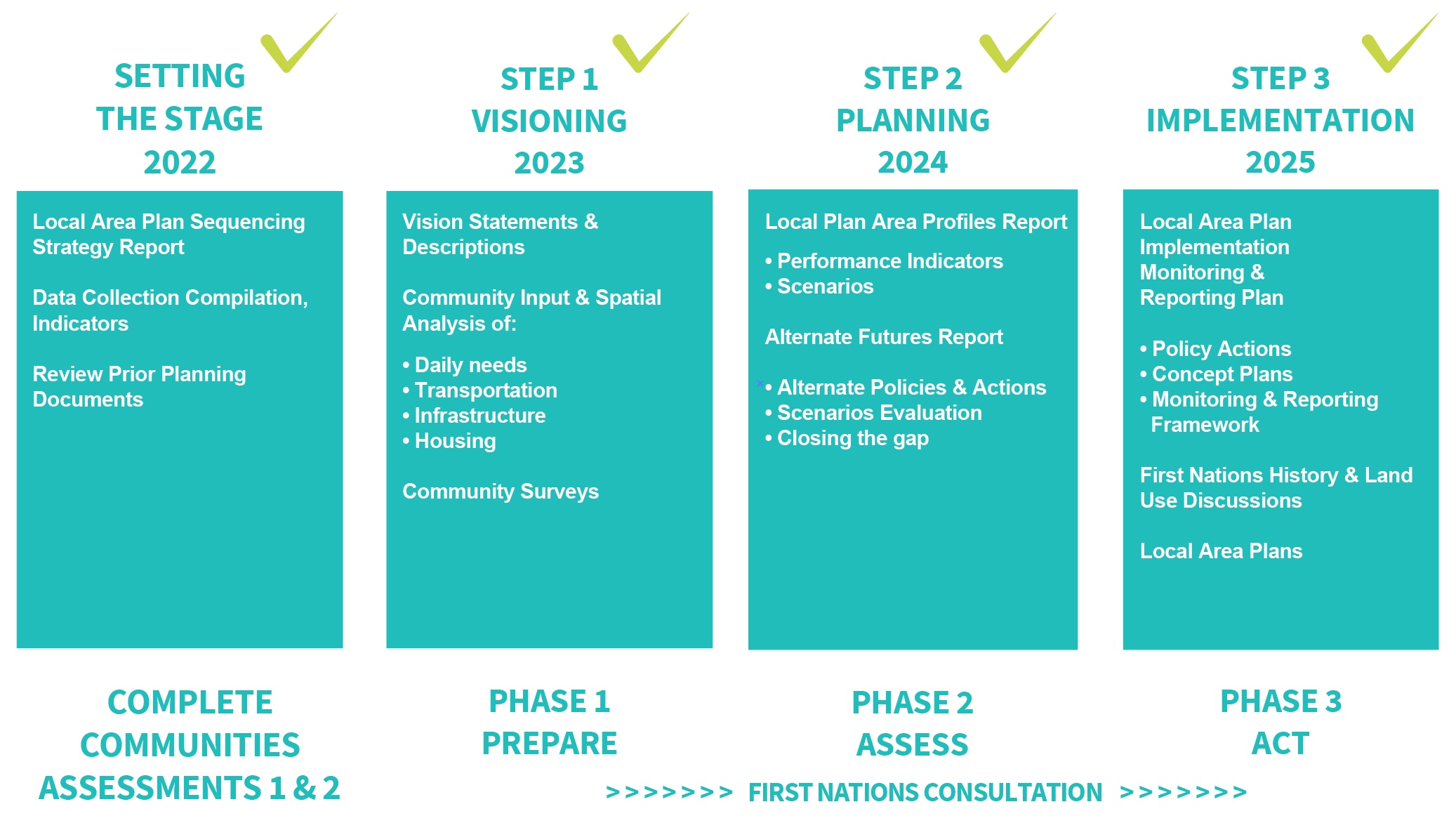WHAT IS A LOCAL AREA PLAN?
Local Area Plans are planning documents that provide greater detail on growth management for communities that are expected to experience change. These plans help shape growth in a way that contributes to more place-specific, well-designed, and livable complete communities. Local Area Plans build upon the vision, objectives, and policy included with Draft Schedule A of the Official Community Plan for the Electoral Areas (Bylaw 4373) and guide growth in village and community hearts so that the qualities of these areas that people love and cherish are preserved and enhanced into the future. Next Steps:
1. OCP Schedule B Local Area Plans first reading and agency referrals Winter 2025/2026. |
|
DRAFT LOCAL AREA PLANS
Click HERE to see the entire Schedule B Local Area Plan document, or click on one of the individual links below to jump to that part of the plan:
Part 1: What is a Local Area Plan?
Part 2: Local Area Plans
2.1 Mill Bay LAP – EA A
2.2 Shawnigan Lake LAP – EA B
2.3 Cobble Hill Local Area Plan – EA C
2.4 Cowichan Bay Local Area Plan – EA D
2.5 Eagle Heights/Koksilah Village Local Area Plan – EA D/E
2.6 Honeymoon Bay / Mesachie Lake / Paldi Local Area Plan – EA F
2.7 Saltair Local Area Plan – EA G
2.8 Diamond Local Area Plan – EA H
2.9 Youbou/Meade Creek Local Area Plan – EA I
APPENDIX I: PROCESS AND PLANNING
APPENDIX II: IMPLEMENTATION PLAN
LOCAL AREA PLANNING PROCESS

COMPLETE COMMUNITIES
Phase 3 was completed in 2025, concluding the project.
The completed phase 3 activities enabled and informed the development of community policy actions, concept plans and implementation plan, particularly in relation to housing, climate action, transportation, and fiscal sustainability.
A. Policy Actions - the resulting policy actions directly support zoning bylaw updates to enable more diverse and affordable housing options, including multi-unit and mixed-use developments, secondary suites, and infill.
B. Concept Plans - illustrate potential future development that connects housing, daily needs, transportation and infrastructure servicing.
C. Implementation Plan - guides and tracks implementation of policy actions to achieve community goals relative to housing, daily needs, transportation and infrastructure.
For more information about the Complete Communities program see here.
WHAT IS A LOCAL AREA PLAN?
Local Area Plans are planning documents that provide greater detail on growth management for communities that are expected to experience change. These plans help shape growth in a way that contributes to more place-specific, well-designed, and livable complete communities. Local Area Plans build upon the vision, objectives, and policy included with Draft Schedule A of the Official Community Plan for the Electoral Areas (Bylaw 4373) and guide growth in village and community hearts so that the qualities of these areas that people love and cherish are preserved and enhanced into the future. Next Steps:
1. OCP Schedule B Local Area Plans first reading and agency referrals Winter 2025/2026. |
|
DRAFT LOCAL AREA PLANS
Click HERE to see the entire Schedule B Local Area Plan document, or click on one of the individual links below to jump to that part of the plan:
Part 1: What is a Local Area Plan?
Part 2: Local Area Plans
2.1 Mill Bay LAP – EA A
2.2 Shawnigan Lake LAP – EA B
2.3 Cobble Hill Local Area Plan – EA C
2.4 Cowichan Bay Local Area Plan – EA D
2.5 Eagle Heights/Koksilah Village Local Area Plan – EA D/E
2.6 Honeymoon Bay / Mesachie Lake / Paldi Local Area Plan – EA F
2.7 Saltair Local Area Plan – EA G
2.8 Diamond Local Area Plan – EA H
2.9 Youbou/Meade Creek Local Area Plan – EA I
APPENDIX I: PROCESS AND PLANNING
APPENDIX II: IMPLEMENTATION PLAN
LOCAL AREA PLANNING PROCESS

COMPLETE COMMUNITIES
Phase 3 was completed in 2025, concluding the project.
The completed phase 3 activities enabled and informed the development of community policy actions, concept plans and implementation plan, particularly in relation to housing, climate action, transportation, and fiscal sustainability.
A. Policy Actions - the resulting policy actions directly support zoning bylaw updates to enable more diverse and affordable housing options, including multi-unit and mixed-use developments, secondary suites, and infill.
B. Concept Plans - illustrate potential future development that connects housing, daily needs, transportation and infrastructure servicing.
C. Implementation Plan - guides and tracks implementation of policy actions to achieve community goals relative to housing, daily needs, transportation and infrastructure.
For more information about the Complete Communities program see here.












